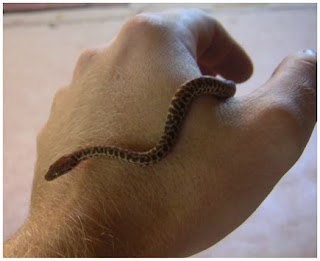BEAUTIFUL ISLAMIC CALLIGRAPHY ART :
Calligraphy is the most highly respected and most fundamental element of ISLAMIC ART.The very first words revealed of the Glorious Qur'an itself encouraged people to read and indicated that God teaches human beings “by the pen.”
Islamic calligraphy, colloquially known as Arabic calligraphy, is the artistic practice of handwriting, or calligraphy, and by extension, of bookmaking, in the lands sharing a common Islamic cultural heritage. This art form is based on the Arabic script, which for a long time was used by all Muslims in their respective languages. Calligraphy is especially revered among Islamic arts since it was the primary means for the preservation of the Qur'an.

Calligraphy is the most highly respected and most fundamental element of ISLAMIC ART.The very first words revealed of the Glorious Qur'an itself encouraged people to read and indicated that God teaches human beings “by the pen.”
![Read [O Muhammad!] in the name of your Lord who created. (96.1) He created man from a clot. (96.2) Read, and your Lord is the Most Honorable (96.3) who taught with the pen, (96.4) taught man what he did not know. (96.5)](https://blogger.googleusercontent.com/img/b/R29vZ2xl/AVvXsEjPRYn8m98K7rVMxrD8BejEnrNIzjYUMBShSIsV_MVll8iEpqoy0ICdyFWgx6xvDH6z3gZkZIYPb02w6a-gDRXCiM31FRgHX-HGO8AdgkCw82xwYG02OFfsDk-STzwKO3CmtildnM-DrK4/s320/Iqra.jpg) |
| IQRA (Read) |
Islamic calligraphy, colloquially known as Arabic calligraphy, is the artistic practice of handwriting, or calligraphy, and by extension, of bookmaking, in the lands sharing a common Islamic cultural heritage. This art form is based on the Arabic script, which for a long time was used by all Muslims in their respective languages. Calligraphy is especially revered among Islamic arts since it was the primary means for the preservation of the Qur'an.
The development of sophisticated calligraphy as an art form is not unique to Islamic culture.calligraphy has been used to a much greater extent and in astonishingly varied and imaginative ways, which have taken the written word far beyond pen and paper into all art forms and materials. For these reasons, calligraphy may be counted as a uniquely original feature of Islamic art. The genius of Islamic calligraphy lies not only in the endless creativity and versatility, but also in the balance struck by calligraphers between transmitting a text and expressing its meaning through a formal aesthetic code.
Calligraphy on Wooden Dome (sultan hassan Mosque Egypt- cairo)
Calligraphy is most commonly displayed on the walls and columns of mosques. The artisans are especially told to give their best to the calligraphic piece because any alteration to it would mean catastrophe. The calligraphy done in mosques is solely based on arabesque. Arabesque is a geometric art form in Islam with repetitive patterns creating beautiful decorations. In calligraphy these patterns are composed of Arabic phrases or paragraphs. The theme of these writings can be derived from the written word of Holy Quran or Hadith (Sayings of Prophet Mohammad (S.A.W.)).

AN ILLUMINATED ALBUM PAGE OF CALLIGRAPHY:
SURAT AL-FATIHA, BY GHOLAM REZA, PERSIA, QAJAR, DATED A.H. 1284/ A.D. 1867
From islamic-arts.org
In earliest times Muslim calligraphers penned their works on parchment, generally made from the skins of sheep and goats, but from the eighth century parchment was gradually replaced by the more flexible support of paper. From the fourteenth century virtually all calligraphy in the Muslim lands was written on paper. Papermakers developed elaborately decorated papers to complement the fine calligraphy, and the colored, marbled, and gold-sprinkled papers used by calligraphers in later periods are some of the finest ever made.
Almost all Islamic calligraphy is written in Arabic script. The Quran was revealed in that language, and the sanctity of the revelation meant that the script was adopted for many other languages, such as new Persian, Ottoman Turkish, and Urdu.
Calligraphy continues to be an important art form in modern times, despite the adoption of the Latin alphabet in some countries such as Turkey. Some calligraphers are trying to revive the traditional styles, notably the Six Pens(Arabic, al-aqlam al-sitta; Persian, shish qalam), and investigate and rediscover traditional techniques and materials.
ASMA UL HUSNA ( THE MOST BEAUTIFUL NAMES OF ALLAH)
M. A Bukhari, 107 x 122 cm, Oil on Canvas, Image: Courtesy of Consulate General of Pakistan
Mohammad Ali Mosque cairo (Egypt)
Surat Al-Noor calligraphy, dome of Hagia Sophia Mosque in Istanbul.
Image courtesy of Rahim Akbar, Mahir Arts.
Image courtesy of Rahim Akbar, Mahir Arts.
Calligraphy - Wazir Khan Mosque, Lahore (Pakistan)
This mosque was built in 1634-36 A.D.The mosque was completed in about seven years.Frescos, kashi-kari, vivid colors, lagrenumber of inscriptios, geometrical patterns, floral designs, arabesques and calligraphy have been used for its embellishment so the mosque is widly regarded as the supreme ornament of any period in South Asia.
Calligraphy At Wazir Khan Mosque



















































